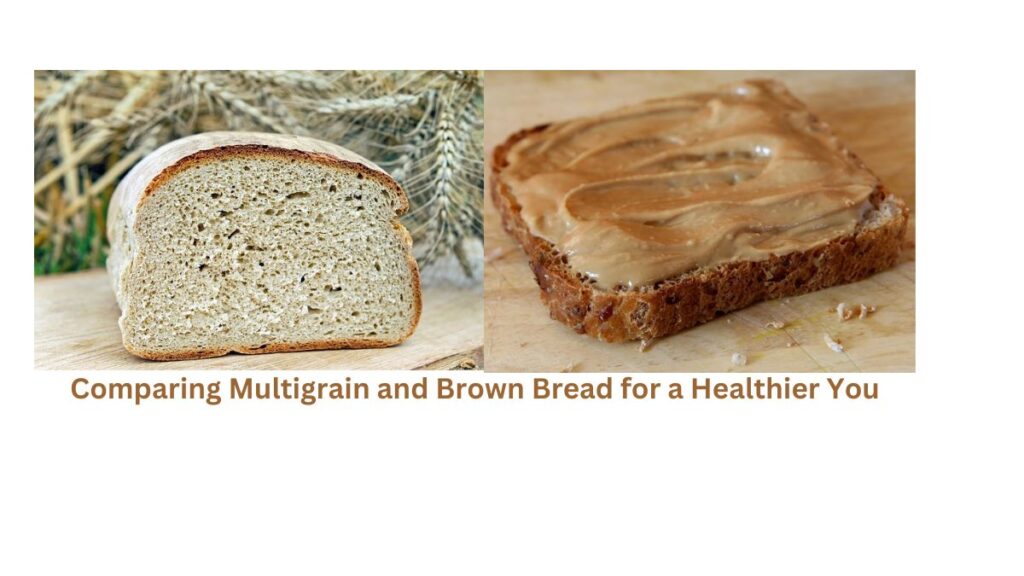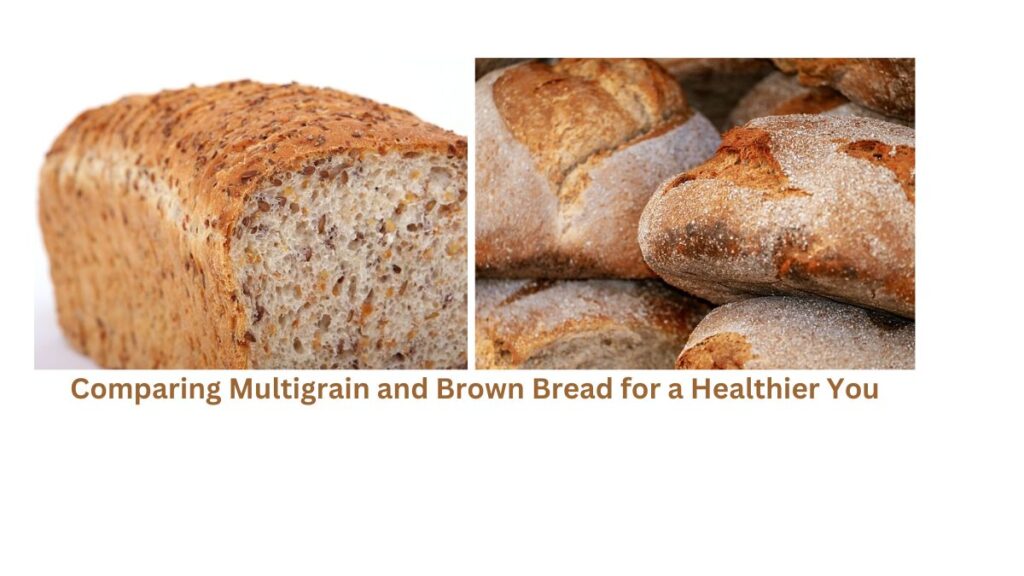Introduction:-
Slice by Slice: Comparing Multigrain and Brown Bread for a Healthier You

In a world filled with bread options, navigating the aisles can be overwhelming. For those health-conscious individuals seeking a nutritious bread alternative, the choice often boils down to multigrain and brown bread. This article aims to unravel the nutritional mysteries slice by slice, helping you make an informed decision for a healthier you.
What are the key considerations for health-conscious individuals seeking a nutritious bread alternative in a world filled with various options, and how does the choice typically narrow down between multigrain and brown bread?
Understanding Multigrain Bread

Multigrain bread, as the name suggests, contains a variety of grains, each contributing its unique set of nutrients. From whole wheat to oats and seeds, this bread type offers a diverse range of vitamins, minerals, and fiber. The combination of grains not only enhances the taste but also provides a broader spectrum of nutritional benefits.
Delving into Brown Bread
Brown bread, often synonymous with whole wheat bread, is made from flour that retains the wheat kernel’s bran and germ. This preservation process ensures a higher fiber content compared to refined white bread. Rich in complex carbohydrates, brown bread is known for its ability to provide sustained energy and contribute to better digestive health.
Nutritional Face-Off
1. Fiber Content
Multigrain Bread: With a mix of grains, multigrain bread typically boasts a higher fiber content. Fiber is crucial for digestive health, promoting a feeling of fullness and aiding in weight management.
Brown Bread: Known for its whole wheat composition, brown bread is also fiber-rich. The intact bran and germ contribute to improved bowel regularity and a lower risk of certain diseases.
2. Nutrient Variety
Multigrain Bread: The varied grains in multigrain bread bring a diverse nutrient profile, offering a range of vitamins, minerals, and antioxidants. These nutrients play vital roles in overall health and well-being.
Brown Bread: While brown bread may have a simpler grain composition, it remains a good source of essential nutrients like B vitamins, iron, and magnesium.
Making Your Choice
1. Personal Health Goals
Consider your specific health objectives. If you’re aiming for a diet rich in diverse nutrients, multigrain bread might be the ideal choice. If your focus is primarily on fiber and sustained energy, brown bread could be your go-to option.
2. Taste Preferences
Ultimately, the best bread for you is the one you enjoy. Taste matters, and finding a balance between nutrition and personal preferences ensures long-term satisfaction with your choice.
Is multigrain bread or brown bread better for good health?
The choice between multigrain bread and brown bread depends on various factors, and neither is definitively better than the other. Both types have their own set of nutritional benefits, and the decision should align with individual health goals, dietary preferences, and any specific nutritional needs. Here’s a breakdown of each type:

Multigrain Bread:
- Pros:
- Diverse Nutrient Profile: Multigrain bread often contains a variety of grains, such as whole wheat, oats, seeds, and more. This diversity contributes to a wide range of vitamins, minerals, and antioxidants.
- Higher Fiber Content: The combination of grains typically results in a higher fiber content, promoting better digestive health and aiding in weight management.
- Enhanced Taste and Texture: The mix of grains can provide a more interesting and varied taste compared to plain brown bread.
- Cons:
- Quality Varies: Not all multigrain breads are created equal. Some may be highly processed and contain refined grains, so it’s crucial to check labels for whole grains.
Brown Bread (Whole Wheat Bread):
- Pros:
- High in Fiber: Brown bread, especially when labeled as 100% whole wheat, is rich in fiber, supporting digestive health and providing a feeling of fullness.
- Nutrient-Rich: Whole wheat retains the bran and germ, which contain essential nutrients like B vitamins, iron, and magnesium.
- Cons:
- Less Nutrient Diversity: Brown bread, while nutritious, may have a simpler grain composition compared to multigrain bread.
Considerations:
- Personal Health Goals: If your goal is to incorporate a wide variety of nutrients, multigrain bread might be a better choice. If your focus is primarily on fiber and essential nutrients found in whole wheat, brown bread could be preferred.
- Taste Preferences: Ultimately, choosing a bread that you enjoy is essential. Both types come in various flavors and textures, so finding one that aligns with your taste preferences is crucial.
- Ingredients: Read labels carefully to ensure that the bread you choose is made with whole grains and has minimal added sugars and preservatives.
In summary, both multigrain and brown bread can be part of a healthy diet. The key is to choose high-quality options, be mindful of individual nutritional needs, and enjoy bread in moderation as part of a balanced diet. If you have specific health concerns or dietary restrictions, it’s advisable to consult with a healthcare professional or a registered dietitian for personalized guidance
What is the healthiest bread to eat?
The healthiest bread to eat depends on various factors, including individual health goals, dietary preferences, and any specific dietary restrictions or sensitivities. However, some generally considered healthy bread options include:
- Whole Grain Bread: Whole grain bread is made from whole grains, retaining the bran, germ, and endosperm. This type of bread is rich in fiber, vitamins, and minerals, providing sustained energy and supporting digestive health.
- Sprouted Grain Bread: Sprouted grain bread is made from grains that have started to germinate or sprout. This process may increase nutrient availability and reduce the presence of certain antinutrients. Sprouted grain bread is often easier to digest for some people.
- Multigrain Bread: Multigrain bread is made from a variety of grains, each contributing different nutrients. It provides a diverse range of vitamins, minerals, and fibers. Look for options with whole grains for maximum health benefits.
- 100% Whole Wheat Bread: Ensure that the bread is labeled “100% whole wheat” to confirm it is made entirely from whole wheat flour. Whole wheat is a good source of fiber, B vitamins, and antioxidants.
- Sourdough Bread: Sourdough bread is fermented, and the fermentation process can enhance nutrient absorption and reduce the presence of certain antinutrients. It may also be easier to digest for some individuals.
When choosing bread, it’s essential to read labels carefully and look for options with minimal added sugars, preservatives, and artificial ingredients. Additionally, consider your own dietary needs and preferences, as well as consulting with a healthcare professional or nutritionist for personalized advice. Keep in mind that moderation is key, and incorporating a variety of whole foods into your diet is crucial for overall health.
Conclusion
In the multigrain vs. brown bread debate, there’s no one-size-fits-all answer. Both options offer valuable health benefits, and your decision should align with your unique nutritional needs and taste preferences. By understanding the nutritional content slice by slice, you can confidently choose the bread that contributes to a healthier and happier you.





